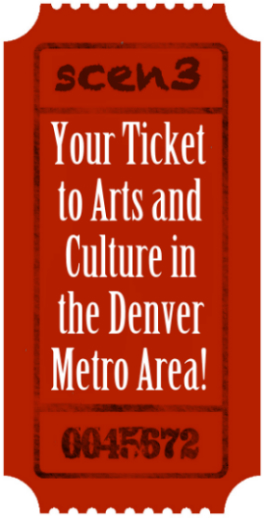Hidden Masterpieces: Choral Music Beyond the Mainstream – Ars Nova February 2018
A review by Betsy Schwarm
 Count on the Ars Nova Singers to delve into repertoire that is four centuries old and yet find offerings that are new and different – and delightful, as well. It turns out that beyond Italian masses and English madrigals, there is much to discover and enjoy.
Count on the Ars Nova Singers to delve into repertoire that is four centuries old and yet find offerings that are new and different – and delightful, as well. It turns out that beyond Italian masses and English madrigals, there is much to discover and enjoy.
For the ensemble’s February 2018 concerts, director Thomas Edward Morgan chose the theme “Hidden Masterpieces of the Renaissance,” and assembled a program of both likely and unlikely suspects. Gesualdo’s madrigals have long enjoyed an audience, in part thanks to his scandalous life-story. Only specialists, however, have paid close attention to Taverner, Lasso and Ockeghem, and even specialists likely found Cristóbal Morales, Costanzo Porta, and Orazio Vecchi to be unfamiliar names. Those seven gentlemen, together with Brumel, Gombert, and Byrd, made for an impressively varied and always intriguing concert program.
Ars Nova’s concert opened with John Taverner’s Quemadmodum, the few surviving copies of which lack texts, though the title and rhythms of the six-voice motet suggest it was intended as a setting of Psalm 41. The ensemble made the most of the frequent juxtapositions of low voices against high ones, so that transitions from one to another would be striking without being startling. Music as peaceful as this should draw one eagerly into it, not knock one out of one’s seat, and Morgan’s forces managed the transitions smoothly.
Morgan had clearly taken care to arrange the program so that each selection contrasted nicely with that which had preceded it, the end result being a user-friendly masterclass as to what can be accomplished with un-accompanied voices. So the smooth
counterpoint of the Taverner work was followed by selections from Orlando di Lasso’s Prophetiae Sibyllarum, likely written by the Flemish-born composer in the 1550s for a newly-acquired Bavarian employer. Full, rich harmonies alternated with nimble counterpoint, even as Lasso sprinkled his score with chromatic colors centuries ahead of his time. It is not an approach one usually finds in Renaissance choral works, but Lasso was forward-thinking, as was director Morgan, who took a few minutes on the podium to tell audience members what to expect. His remarks gave listeners something specific for which to listen, while yet stopping short of a graduate lecture, a practice more conductors should consider. Certainly audience members were attending closely to his words and nodding in appreciation of the information.
This shift of musical techniques continued throughout Ars Nova’s program. Some works were sacred, others secular. Additionally, some used the full chorus, others only portions of it, and Ars Nova also shared the recital with Solis, a Boulder-based a cappella quintet of two countertenors, one tenor, one baritone, and one bass. Three of the quintet’s five members – including its director, baritone Brian Du Fresne – also sing with Ars Nova, though in Solis, each gets a larger share of the spotlight than is possible amidst a chorus of nearly forty singers. Solis’ portion of the program – a Gesualdo madrigal, as well as motets by Morales and Vecchi – gave them, particularly countertenors Jonathan Raabe and John Boggs, the chance to balance their voices against one another without a conductor at the helm. The artists of Solis approached this opportunity for vocal chamber music with clear relish and flair.
The most ambitious work on Ars Nova’s program was not the longest, but certainly the most intricately woven. Ockeghem’s Deo gratias is a canon for 36 voices: nine SATB ensembles, each having substantially different music. Deo gratias has so much happening at any given moment that some scholars suggest Ockeghem cannot have written it himself, it simply being too different from everything else in his catalog. However, it takes little imagination to suppose that having composed it, Ockeghem then found it difficult to find singers to manage it, and never tried that particular trick again. Certainly, Ars Nova managed it deftly, thanks in no small part to conductor Morgan. That he also made a point not only of speaking to the audience but also having the different subdivisions of the ensemble demonstrate various portions of the music was much appreciated. Morgan also deployed his forces so that the nine sub-groups were distributed across the front of the venue, not only facilitating their sight-lines to him, but also those of the audience to the performers. Thus, one could watch as the themes moved from one section of the ensemble to another. It was exactly the sort of perspective one lacks when listening to a recording, and Morgan and his forces made the most of the opportunity.
This reviewer attended the last of three performances of Ars Nova’s program, on February 25 at St. Paul’s Community of Faith on Capitol Hill in Denver. As it would have been impractical to observe upon each of the 13 works performed, this review has focused on a representative selection as an overview of Ars Nova’s artistry. In sum, it was not only beautiful, but also a fulfilling way to spend an afternoon, a fact that will surprise none of Ars Nova’s existing fan base, but hopefully will encourage the uninitiated to sample the ensemble’s next performances, scheduled for late April.











